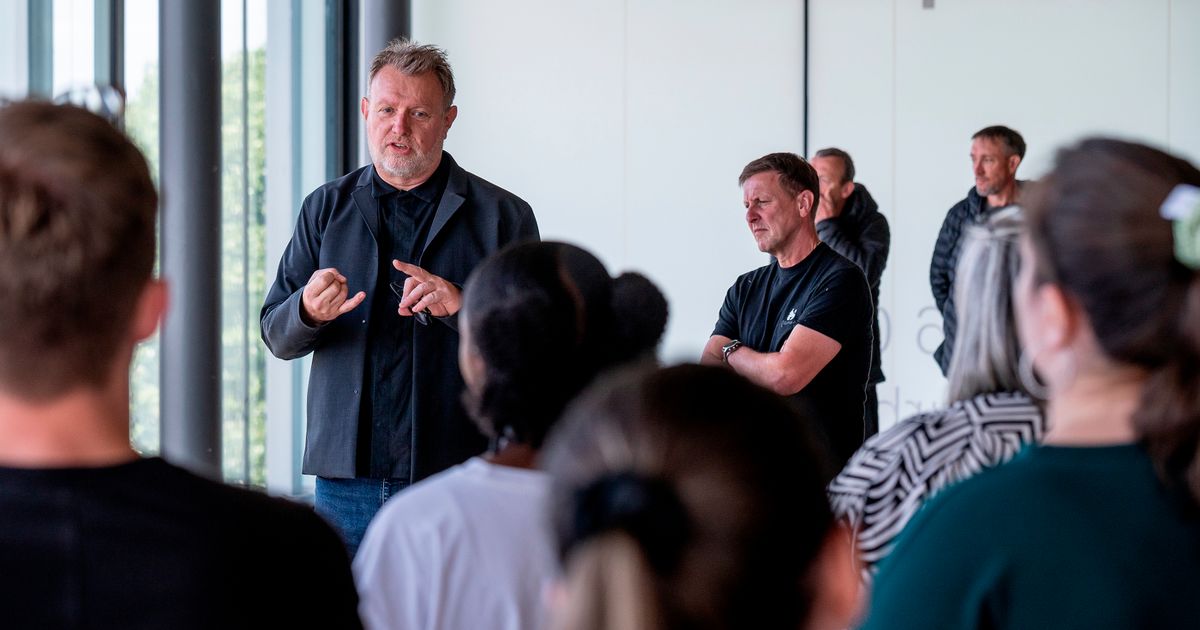A company which was central to Liverpool’s revival in the late 20th century is now taking on a huge project in the cityDan Haygarth Liverpool Daily Post Editor and Regeneration Reporter
05:00, 22 Sep 2025
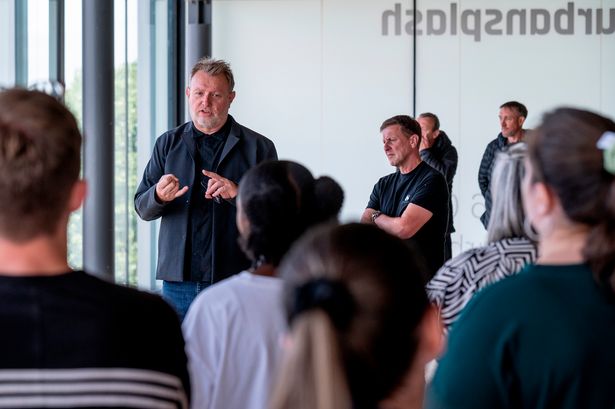 Jonathan Falkingham, Urban Splash co-founder(Image: Urban Splash)
Jonathan Falkingham, Urban Splash co-founder(Image: Urban Splash)
Liverpool looked very different when Urban Splash was founded. Post-war deindustrialisation had hit the city hard, hitting a nadir in the 1980s as it struggled with high levels of unemployment and was punctuated by derelict warehouses and factories, reminders of how its former economic might had fallen.
But among that tough landscape two men saw promise. Promise that would allow them to turn post-industrial spaces into modern, exciting developments, injecting confidence into a city which needed to begin a new chapter.
Jonathan Falkingham and Tom Bloxham founded regeneration company Urban Splash in 1993. Since then, across the country, it has created more than 6,000 new homes and two million square feet of workspace in more than 60 regeneration projects.
But it all began in Liverpool, as Jonathan and Tom set about transforming forgotten spaces. Originally from Yorkshire, Jonathan, 63, came to the city in the 1980s to study architecture at the University of Liverpool.
He arrived in a bruised city but recognised its potential, setting up architecture practices and then Urban Splash. That company came about when he worked with Tom on a ground-breaking new bar in Liverpool city centre.
Reflecting on the firm’s work in the city, creative director Jonathan told the ECHO: “Tom and I set up in 1993. Tom was based in Manchester, I was based in Liverpool. We got to know each other really well because we worked on Baa Bar – the original one in Fleet Street.
“Buildings were very cheap, nobody wanted to do anything with them or invest in them. Nobody knew what to do with them.
“This was the same in both Manchester and Liverpool – in fact all northern cities where there’s industrial heritage and losses of jobs, which was terrible and had a huge economic impact. But no one got their heads around what to do with all these empty buildings.
“We were both quite young and we had a lot of friends both in Liverpool and Manchester who were occupying cheap space in the city centre. That’s all what’s now Ropewalks, but all over the city there was really huge space and there were loads of creatives in music, architecture, design, fashion occupying all these buildings – so that was our kind of stomping grounds.”
One of those buildings was the aforementioned Baa Bar, which opened in a converted warehouse in 1991. With a pioneering late licence, the venue changed Liverpool’s nightlife.
Jonathan added: “When we did the bar, you could buy it really cheaply. We didn’t have very much money so we did a very creative but cheap fit out and Baa Bar became nationally-renowned.
“It went on the cover of Blueprint and of Face magazine, and we’re really at the start of changing nightlife in Liverpool. Maybe some would say for the worse now.
“But it was a time when 11pm was closing time for pubs. Then you went to a nightclub – we were the first bar in Liverpool to get a 2am licence and not charge in, so it became kind of late night drinking, a coffee bar in the morning, a tapas bar after work then it went into drinking.
“Then we had DJs at the end of the bar taking us into the later evening. We were very immersed in what was happening in the city around that time.
“And all our friends and all our colleagues and peers loved the city centre because it was a kind of a playground for us all. I think on the back of us doing Baa Bar, what we realised is you can buy buildings quite cheaply back then, if you had some creativity and flair, you could do makeovers and provide space that people wanted to come and use.”
The success of Baa Bar led Tom and Jonathan to establish Urban Splash and the early work focused on the city centre. They hoped to replicate the spirit of Baa Bar as they set about working on a new square which is now at the heart of Liverpool’s late-night culture.
Jonathan explained: “An opportunity came up which is the building which is now Concert Square. An opportunity came up to buy the building at auction, so we looked at that, discussed it and bought the building.
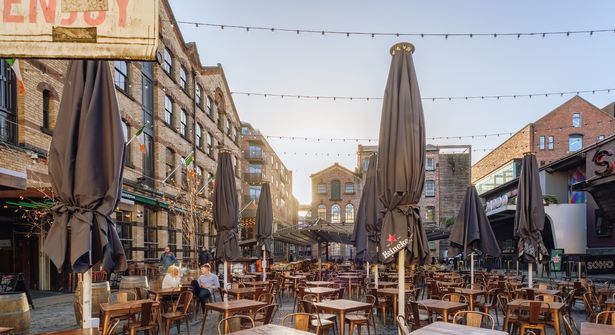 Concert Square in Liverpool city centre, an Urban Splash project(Image: Urban Splash)
Concert Square in Liverpool city centre, an Urban Splash project(Image: Urban Splash)
“Again we were in our late 20s, the idea there was it’d be a great place to live in the city centre, we could do some cool loft apartments, we could do bars.
“Concert Square was a new public square – probably the first new public square in the city for 100 years when it was done. The building was great but the area was very down at heel with no investment.
“We were saying to the city that we want to do outdoor trading with pavement cafes and nobody believed this would work because we’re in Britain and it’s too wet and rainy.
“We were all quite shocked at how quickly the Liverpool community adopted being outdoors and so it very quickly became a really really busy place and spawned what is a really big night spot for the city now.”
The company’s early flagship projects also included the Tea Factory building on Wood Street and St Peter’s Church (formerly Alma de Cuba and now pub St Peter’s Tavern) on Seel Street as it worked with the city council to bring together the Ropewalks district around Bold Street. It also expanded out of the city centre to work on the Collegiate School in Everton and save the Matchworks in Garston, which was the first UK building constructed with reinforced flat-slab concrete.
The Grade II-listed Matchworks had been built between 1919 and 1921 as a factory but it closed in 1994 and was threatened with demolition. Urban Splash brought it back to life as it was turned into workspace.
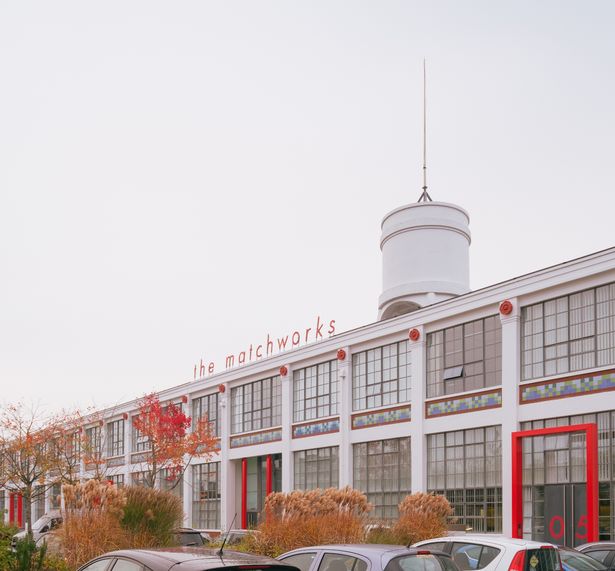 Urban Splash worked to regenerate Matchworks in South Liverpool(Image: Urban Splash)
Urban Splash worked to regenerate Matchworks in South Liverpool(Image: Urban Splash)
Jonathan is very proud of the work the firm has done in his adopted home. Urban Splash was at the forefront of a vital phase of regeneration for Liverpool, allowing the city to turn a corner from the dark days of the ’80s.
He said: “It really was a huge privilege, you can’t take that for granted. We were in a position where we could do something really positive for the city – the city that I had chosen to stay in and I really love, I’ve adopted it.
“Bear in mind in the ’80s graduate retention in the city was virtually non-existent. There were no jobs but I felt there’s something here about the bare bones of the city – a strong cultural offer, great geography with the river and the landscape, great architecture, great buildings, great cultural life and underground cultural life, great parks.
“So all the really big ingredients – it just needed to have confidence. I like to think we played a positive part in helping deliver some of that. It was a really exciting time and there was lots going on there.”
With that confidence injected once more, Liverpool continued on a positive trajectory throughout the 2000s, coming back from the brink of the dark days of the 1980s. This culminated in being named 2008’s European Capital of Culture, which with it brought further investment and development, most prominently Liverpool ONE.
“The city’s got absolutely huge potential – it’s come an enormous way since the ’80s”, said Jonathan. “There’s no question about that. And it’s a really vibrant, exciting city.
“The shopping offer in the city centre was declining and people were traveling to Chester or Manchester to shop. So from the late ’80s early ’90s right through to Capital of Culture in 2008 the city was on a relentless march of building its kind of proposition and making it really attractive.
“Also, I also don’t think we can underestimate the impact that easyJet had on Liverpool with lots of overseas visitors coming in and I think that that’s interestingly put Liverpool on the map again in that it was really easy to get from all over Europe.
“But the negative stories from the ’80s about the city were being replaced with really positive stories, like Liverpool ONE. It was a massive moment for the city.
2008, however, also brought with it a financial crisis. And with that came huge challenges for the construction industry. By that point Urban Splash were working on projects around the UK, all of which were impacted by a recession which hit Liverpool’s property sector badly.
“I think the city suffered a bit when the credit crunch happened”, said Jonathan. “The world of development changed – regeneration, which is quite hard when times are good, is almost impossible when times are bad and you can’t get traditional lending.
“We as a business and anybody in property really struggled in that banking crisis. We came through that and survived it.
“But the year of the credit crunch, we had a thousand homes on site across the country, all sold with purchases lined up. But our lenders were getting more twitchy about continuing to invest.
“Purchasers couldn’t get mortgages, so for a period it really stalled our business and we spent probably four or five years fighting fires and trying to work our way through a kind of financial challenge that we had with our banks and our projects and what have you.
“And I think most property companies had exactly the same experience. So things can just gradually kind of slow down in the city but also in other cities. I think then it’s slowly starting to pick up again.”
Jonathan believes that tough time had a lasting impact on the sector. But he is hoping to change that with his firm’s next big project in Liverpool.
He said: “Interestingly a lot of residential projects in the city are now delivered by either large house builders or large scale investors and that’s helpful because it brings a certain level of housing supply and there’s quite a lot of it but what hasn’t really been happening is that broader mix of housing – multi-generational living or starter homes for people, or later living.
“It’s very easy to spot if you just look at what’s been delivered and what’s in the pipeline for the next 10 years. It’s largely a particular type and our approach in Festival Gardens is to look at mixed typology and multi-tenure.”
Festival Gardens is the next huge job in the city for Urban Splash. Working in a joint venture with igloo Regeneration, the firm will deliver a planned new housing development and multi-generational community on that site in South Liverpool.
The two developers are proposing to deliver 34 different styles of housing on the land which hosted the 1984 International Garden Festival. It’s expected a planning application for phase one of the huge project will be submitted in late 2026 for the creation of 440 homes.
This would include 80 extra care and 110 affordable homes. If approved, building would begin in Spring 2027, with phase two and three to follow providing up to 800 homes in total.
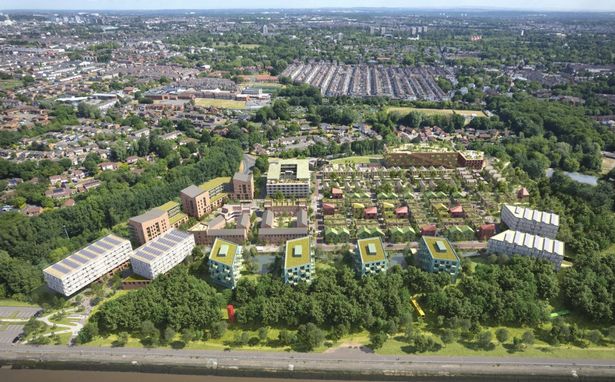 How the new Festival Gardens neighbourhood could look
How the new Festival Gardens neighbourhood could look
It is a project that Jonathan is relishing. More details will be revealed in due course but he believes it’s one of the city’s “biggest opportunities” and will mean Liverpool’s iconic waterfront is properly linked from the north at Everton’s new stadium down to the south at Festival Gardens.
He said: “I think it’s taken a bit of time for the city to get there with this, to be honest but they have very recently launched the waterfront strategy. It is about how you animate and link up the entire waterfront.
“We’ve got Otterspool Prom and you can actually already navigate most of the waterfront but how does it all fit together and complement each other so that it works?
“I think having the stadium at one end now really helps because it gives a destination at that end which probably opens up the opportunity for all the sites that sit between the Peel docks (Liverpool Waters) that have been done through to the stadium so that’s great.
“Festival Gardens is probably the last major site at the other end of this kind of walkway. I think our development site and the wider park site is the last major bit of the waterfront at this end.”
